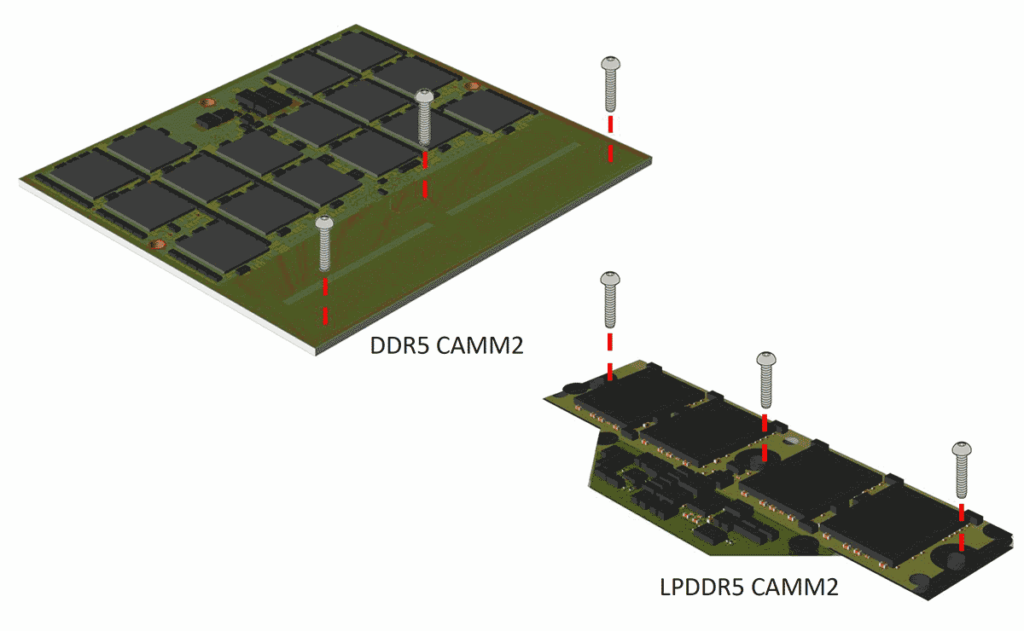Crucial Delivers CAMM2 at LPDDR5X-7500 To Retail
We’re told that when Dell tried to push its Compression Attached Memory Module (CAMM) as an industry standard, the JEDEC standards committee pushed back. Regardless of which JEDEC member had the greatest impact on its final design, the standard was finalized last December with the primary difference being one of bit width: While Dell’s original CAMM was designed as a direct replacement for 64-bit SODIMM’s, CAMM2 would position two of those on a single module. All Micron was left to do was slap a 32-bit interface on its LPDDR5 chips (ICs), as only four of those would be required to create the module’s new 128-bit interface.

Chinese laptops soon followed, and Micron recently announced retail availability of replacement modules, and when we finally got around to confirming that availability, there they were at LPDDR5-7500.

The greatest benefit of the CAMM2 package is that it allows shorter pathways to the processor, thereby reducing transmission errors at high data rates, as indicated by comfort in releasing the new product at so high a data rate.

Our greatest concerns of the package warping over time (see Intel’s LGA 1700) and LGA pin damage (see every LGA ever handled by an end user) have been partially eased not by any manufacturer, but by the DIY site iFixIt: Its photos show a “bracket” helping to spread the load and a drop-in connector that contains all the flexible pins, the ease of connector replacement making short work of a bent-pin fix.
Available in both 32 and 64 GB capacities at $175 and $330 respectively, Crucial’s new LPDDR5 differentiates itself from standard DDR5 with power saving technologies that benefit battery runtime at the cost of added latency. As for its use of the term LPCAMM2, it appears that all LPDDR5-loaded CAMM2s will use a reduced form factor PCB. So perhaps the second LP stands for low-profile by tradition (even though these don’t stand vertically)?

We’ve no word yet on whether desktop CAMM2 motherboards will also support LPDDR5 modules. Meanwhile, and a look back at the module replacement instructions linked above shows that the Lenovo notebook doesn’t have room for the full-sized CAMM2 modules. As Micron appears to lead the industry in developing the more compact form factor, buyers should look forward to seeing its LPCAMM2 modules appear in other notebooks over the coming months.
